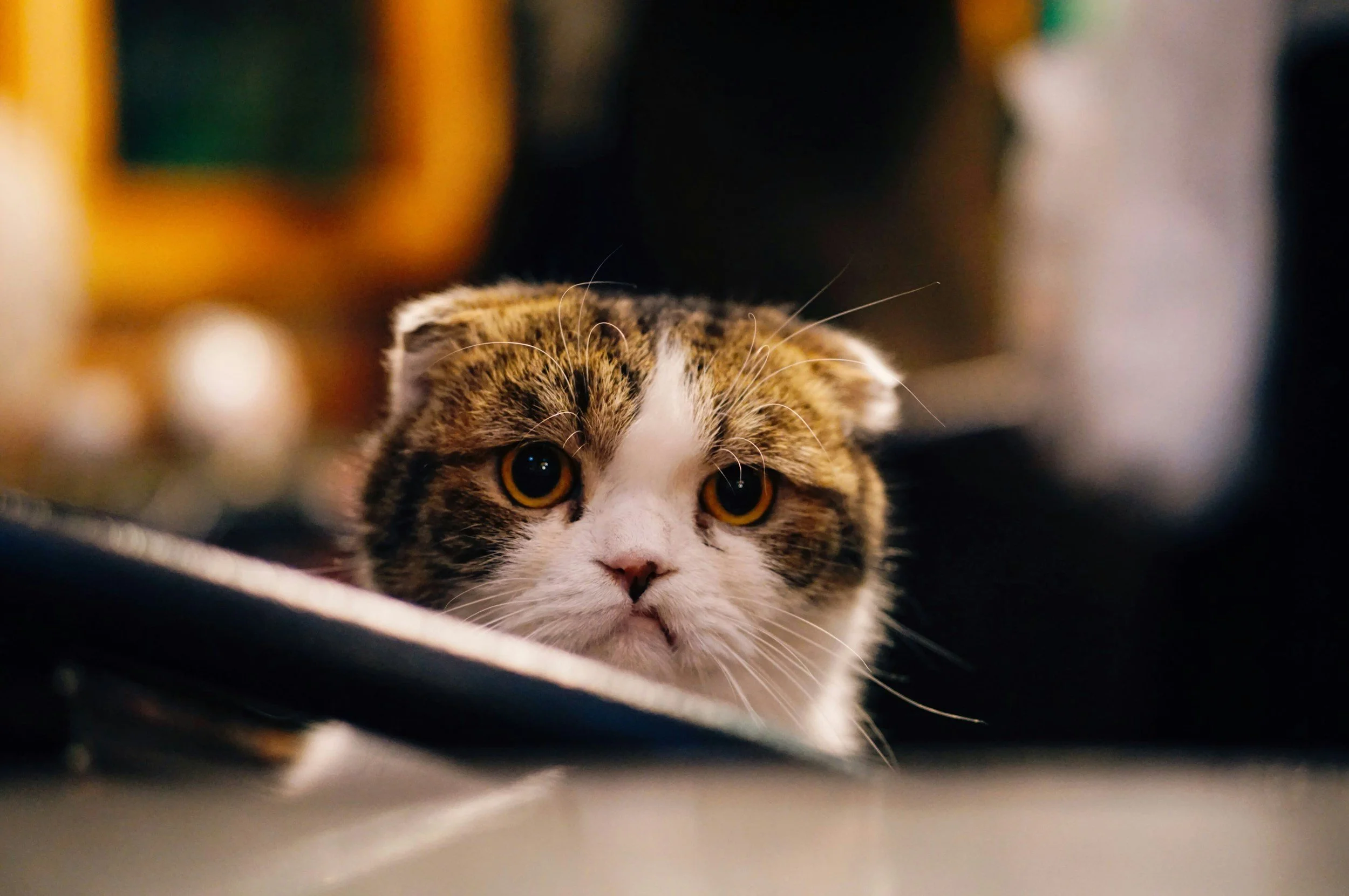Emilee Brewer
Learning body language is an important life skill. Not just human body language, but animal body language too. Dogs, cats, reptiles, rabbits, all animals have their own unique way of communicating their feelings. Let’s shift gears back to our furry feline friends for this week’s post!
Cats use their eyes, ears, whiskers, and tail to communicate as well as their voice. Understanding these different signs will enable you to better care for your kitty. You also want to consider outside factors like their environment, sights, sounds, and smells to further understand them.
According to PetMD, a happy cat is a loose cat. Their posture will be relaxed, and their tail and limbs will be stretched out away from their body while they’re lying down. They may even show you their belly, but watch out! This doesn’t necessarily mean they want belly rubs. Showing off their most vulnerable spot means they trust you and they feel safe. Not all kitties like their bellies being touched, though, so be careful or you might catch a paw to the face. A happy cat may also purr to show their contentment. When it comes to their body language, check their eyes, ears, and tail. A comfy kitty will have round eyes or partially closed eyes with their pupils like slits. They’ll also blink slowly to show trust! Happy ears are upright and face forward, and a happy tail is typically pointed up with a curl at the tip.
Now, a stressed cat is going to have the exact opposite body language of a happy cat. Their body is going to be super stiff and tense. They also shrink and keep low to the ground. Their ears will be flat, and they’ll have wide eyes with dilated pupils. They can also display displacement behaviors such as licking their lips or increased swallowing. Some cats may even urinate or defecate outside of the litter box when stressed. Their ears may be rotated to the sides or angled backward. Finally, their tail is likely close to their body, but they may also thump it if they’re annoyed. It’s a night-and-day difference between a happy cat and a stressed cat.
My favorite cat mood is when they’re feeling playful. Their pupils get really big, and I call this dumbass mode. This is when the cat is feeling silly and ready to play! They flick their tail from side to side, and they wiggle their butts, ready to pounce on the nearest toy. Their ears are upright and forward-facing. Cats are still predators at the end of the day, so when they play, they act like they’re hunting. They’ll crouch down, wiggle, and start chasing toys. Be careful with the tail flicking, though, because, as I mentioned, it could also show annoyance. Read the situation, and if they’re displaying other “hunting” behaviors, you should be in the clear to continue playing!
An aggressive cat is going to make themselves look large and in charge. Any person’s or animal’s last resort is violence, but if a cat feels threatened enough, they will fight back. To make themselves larger, they’ll arch their back, and their fur will stand up. An aggressive cat will maintain eye contact, and their eyes may narrow. Their ears will be turned back or lie flat against their head, and their whiskers could be flat against their cheeks or pushed forward. Again, they may also flick or thrash their tail. Before lashing out, the cat will hiss or even spit. As a last resort, they’ll lunge or swat at the perceived threat.
Finally, and arguably the most important, a cat’s body language can clue you in if the animal is sick or in pain. Unfortunately, animals can’t tell us when they’re hurting, so it’s super important to know what to watch for, especially because cats are great at masking illnesses or injuries. Their body may appear tense with a hunched posture, and their tail tucked underneath them. Their ears will be held low, or they could be rotated to the sides. A cat’s eyes can appear dazed or glossy, and they may squint or keep them shut. Excessive purring or meowing and yowling are also signs of distress. Watch for changes in their behavior, like decreased energy, a change in appetite, or aggression, as these can also demonstrate discomfort.
As you may have noticed, some of these behaviors overlap, like the tail flicking and the dilated eyes. Always consider your environment and possible stressors to determine what mood your cat is in. Understanding these behaviors will help you be a better cat parent!



